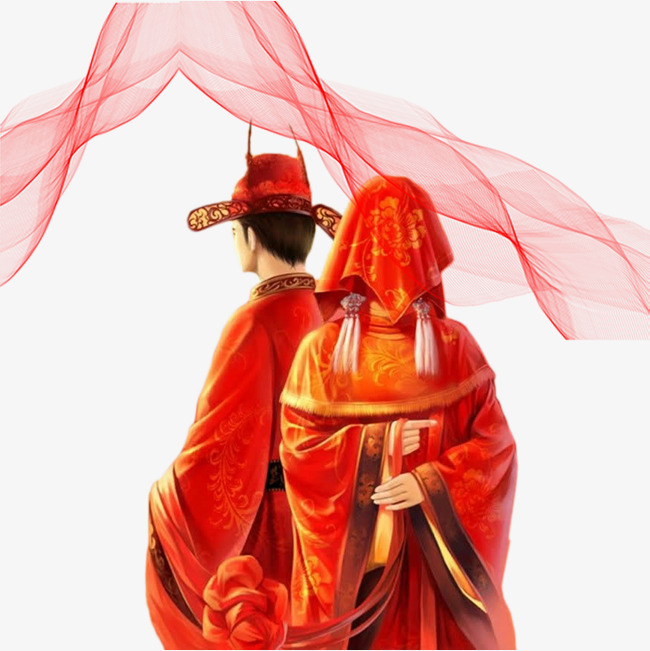Have you attended a Chinese wedding ? The bride typically wears two to three wedding outfits. There’s the Western white bridal gown, the Chinese red wedding dress, and an evening party gown. Why the color red, you may ask? Many Asian brides wear the color red because it symbolizes good luck and fortune. This too is a Chinese tradition. As for the dress? Imagine a red qipao with beautiful gold or silver silk embroideries of the phoenix, dragon, peony flowers, and more.
Due to China’s complicated topography, wedding customs vary across provinces. Some places are more traditional, while others are more modern. It all boils down to the wedding that the bride, groom, and their families prefer. The wedding dress design depends on the style of the wedding itself.
Despite these variations, the wedding dress of Han Chinese brides remains largely consistent in fashion across the nation.
So is that all there is to it? Just the qipao? Not really. Let us journey to the past, explore the evolution of the Chinese wedding dress, and explore why the traditional is making a comeback.
Fashionistas, culture enthusiasts, and history fans, enjoy!
-
1 Modern China: 20th Century
The cheongsam (qipao) is a form-fitting dress with Manchu origin. The qipao was initially worn by socialites, women’s rights activists, and celebrities from Shanghai in the 1920s-1930s. The dress was then brought to Hong Kong and Taiwan during the Cultural Revolution. There are now many variations of the qipao. Instead of an A-line with slits up the sides, the qipao may come in the form of a mermaid or a trumpet bottom. The lengths of the dress may just cut off right above the ankles, reach the knees, or even be very short.
Now, it is uncommon to see a qipao that isn't a wedding dress, worn at a social event or on a waitress at a restaurant. Albeit, qipaos have gained popularity by overseas Chinese.
-
2 Late Qing Dynasty: 19th Century
Longfenggua (龙凤褂), xiuhefu (秀禾服), and malaigua (马来褂) are three modified forms of the original Manchu wedding dress shown above.
They have made a comeback in modern China due to their more orthodox appearance. Some people argue that Manchu-originated dresses don't represent Han Chinese, but we won't go into that logic.
The longfenggua is the most complex in design and the most representative of what Manchu royals wore. The dress is more popular in Guangdong province in Southern China. The dress is mostly embroidered in five styles: 30%, 50%, 70%, 90% and 100%.
This particular longfenggua is called guahuang (褂皇), which is 100% embroidery.
 Source: https://www.weibo.com/p/1001603925490502076827?pids=Pl_Official_CardMixFeedv6__4&feed_filter=1
Source: https://www.weibo.com/p/1001603925490502076827?pids=Pl_Official_CardMixFeedv6__4&feed_filter=1Many Chinese people confuse longfenggua for xiuhefu and vice versa, but the differences are easily observable. Can you spot them?
 Source: https://kknews.cc/fashion/omp4vl6.html
Source: https://kknews.cc/fashion/omp4vl6.htmlThe shape of longfenggua will always be straight like a tube. Xiuhefu, on the other hand, is more versatile in movement. This dress appeared late to the scene, around the end of the Qing Dynasty and the beginning of the Republic of China. It was more of a commoner’s wedding attire. However, the dress was popularized by the movie 橘子红了 which starred the famous actress Zhou Xun.
Another major difference between the two is the position of the placket. Longfenggua's placket is always centered, while xiuhefu's can either be centered or positioned on the side. Supposedly, dresses with centered plackets could only be worn by the main wife while side plackets were worn by the concubines. China now practices monogamy, so how the placket opens depends solely on the bride’s taste.
Lastly, malaigua is a fusion of Southeast Asian styles, such as Indian silk with the traditional Chinese layout and patterns. It is called malaigua because it was worn by the ethnic Chinese from Malaysia. This dress comes in different colors such as blue, green pink, purple, etc.
 Source: https://k.sina.cn/article_5650314240_p150c8f40002700mvxl.html
Source: https://k.sina.cn/article_5650314240_p150c8f40002700mvxl.html -
3 Ming Dynasty: 14th Century
The trend of wearing the red wedding dress began in the Ming Dynasty. However, this color was reserved for the royal family. Even the Empress could wear red only on certain occasions, such as her very own opulent wedding to the Emperor.
Then, how did the red wedding dress become so prevalent among the commoners? Despite the royal “ban” on wearing red, there was no enforced law that prohibited people from actually wearing it. Not everyone could afford to wear red though, so other colors such as green and blue were standard as well.
However, what was illegal was a bride wearing a phoenix coronet or xiapei, an outer cloth similar to a shawl, that had been modeled after the Empress's regalia. This was a grave offense. But there were work-arounds. Brides would wear an imitation phoenix coronet and imitation xiapei. This same principle applied to the groom. The commoner groom would wear imitations of a government official's formal attire. In summary, if one possessed enough wealth, the wedding could be conducted in any manner, so long as the ceremonial outfits did not violate the rules of social hierarchy.
For clarity, here is a scene from the classic 1987 drama version of Dream of the Red Chamber.
 Source: https://www.sohu.com/a/217603407_255783
Source: https://www.sohu.com/a/217603407_255783This concludes part one of “Evolution of the Chinese Wedding Dress”. What do you think? Which period piece do you like thus far?






0 Comments